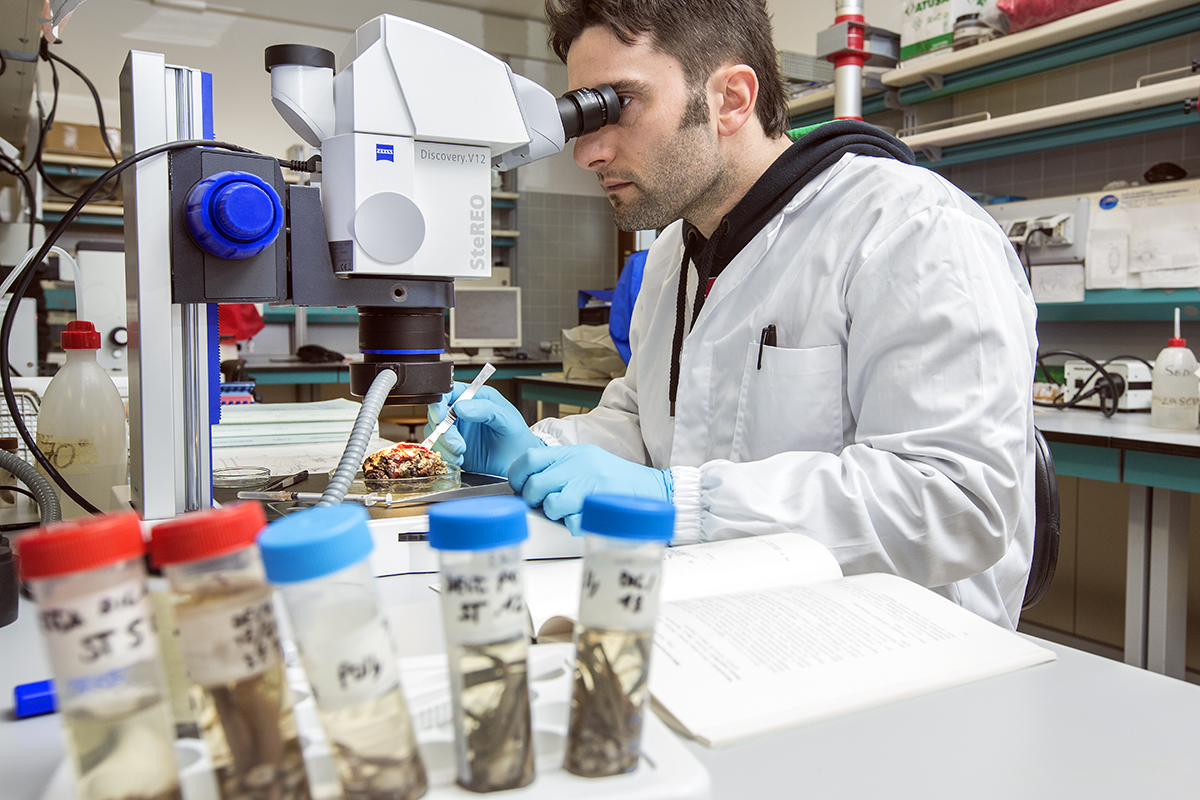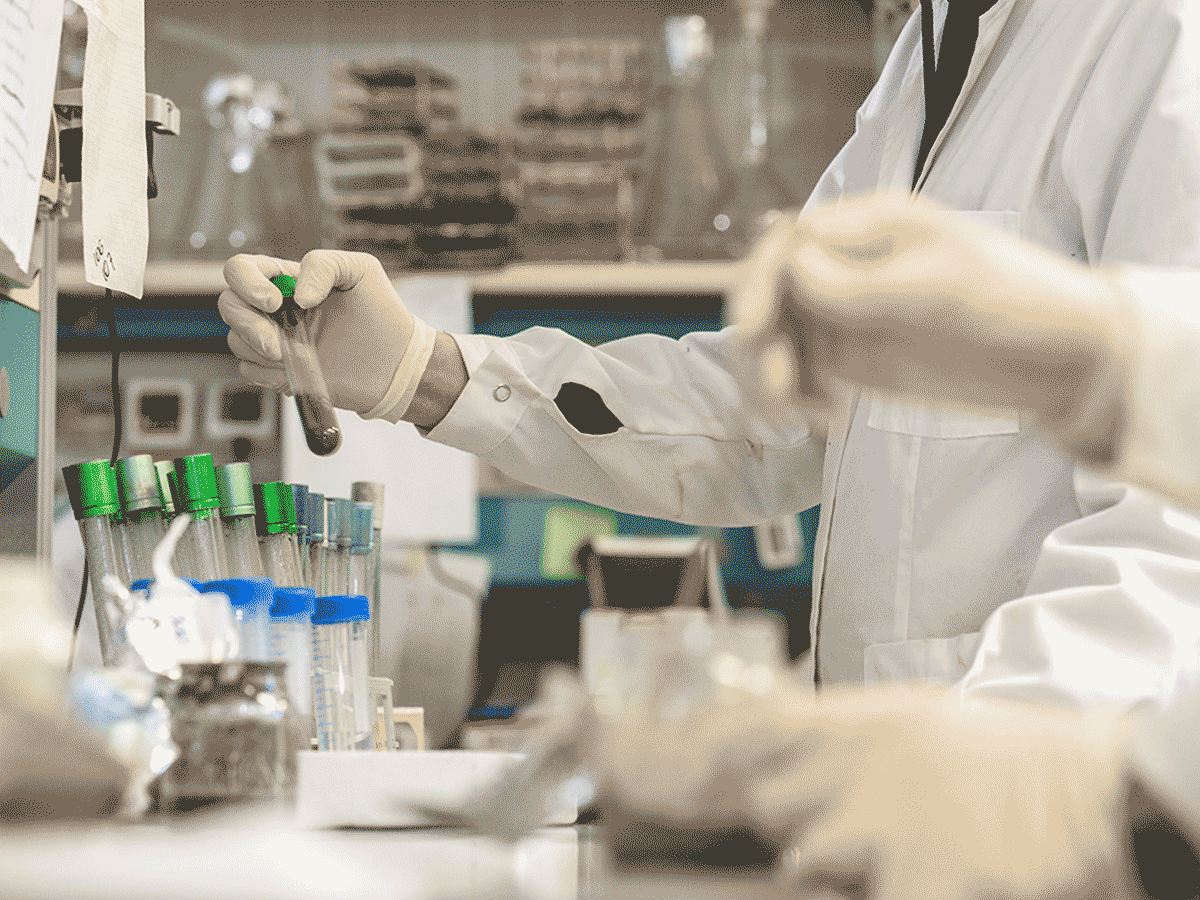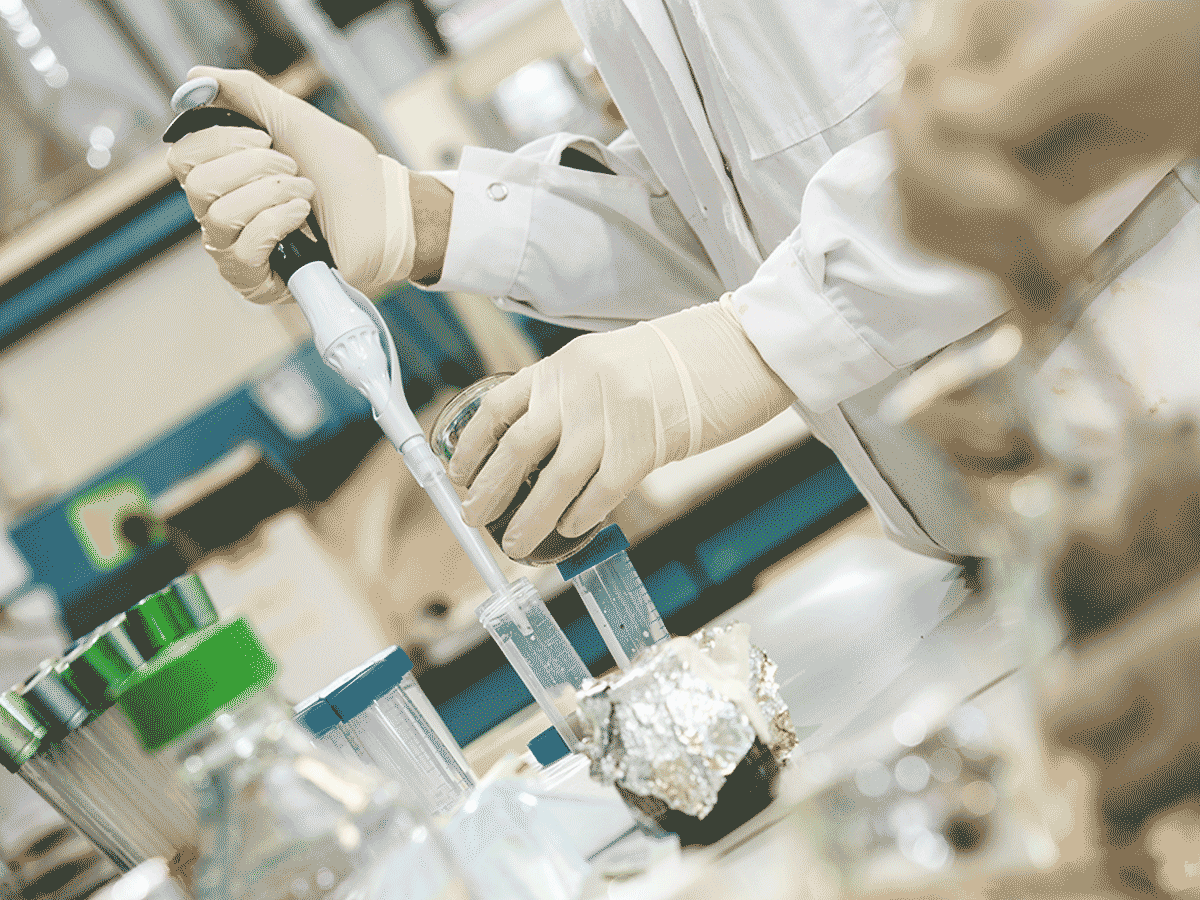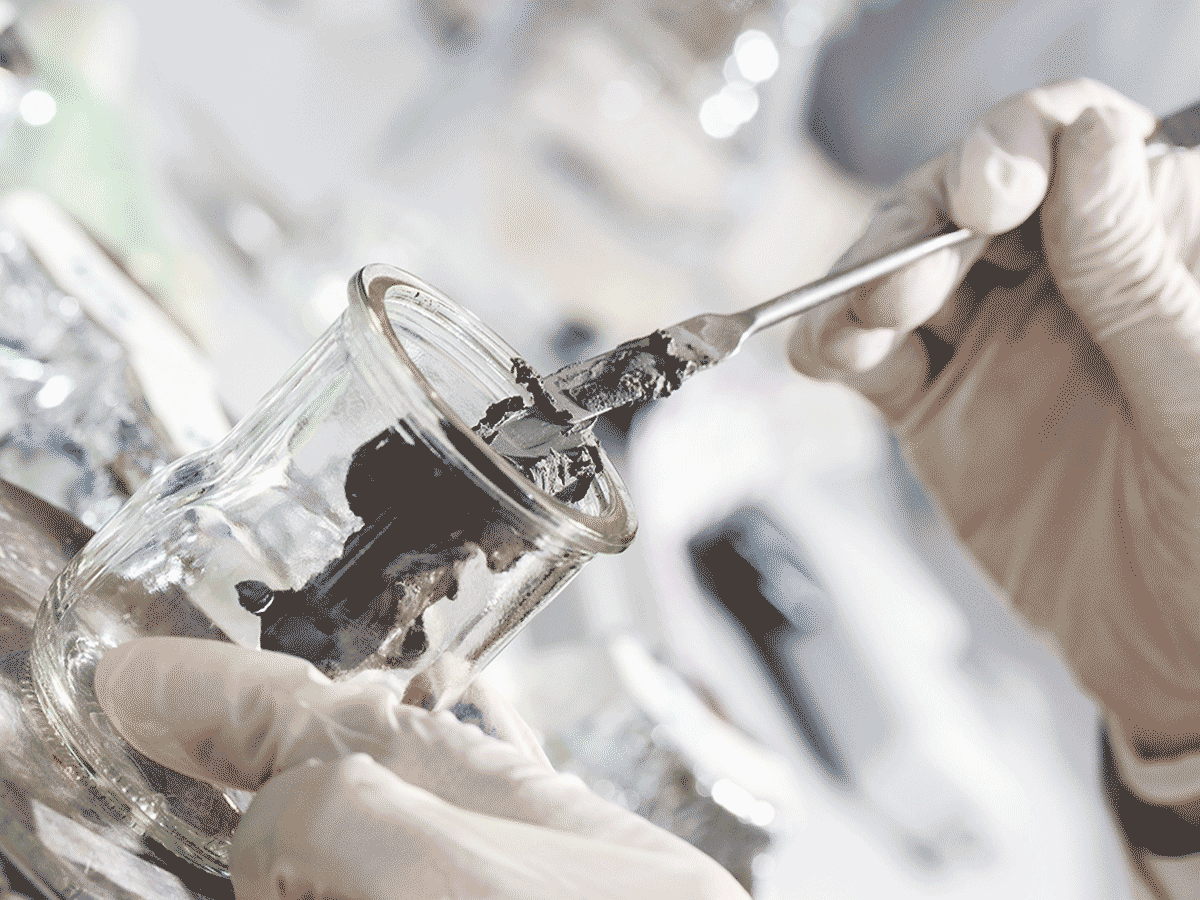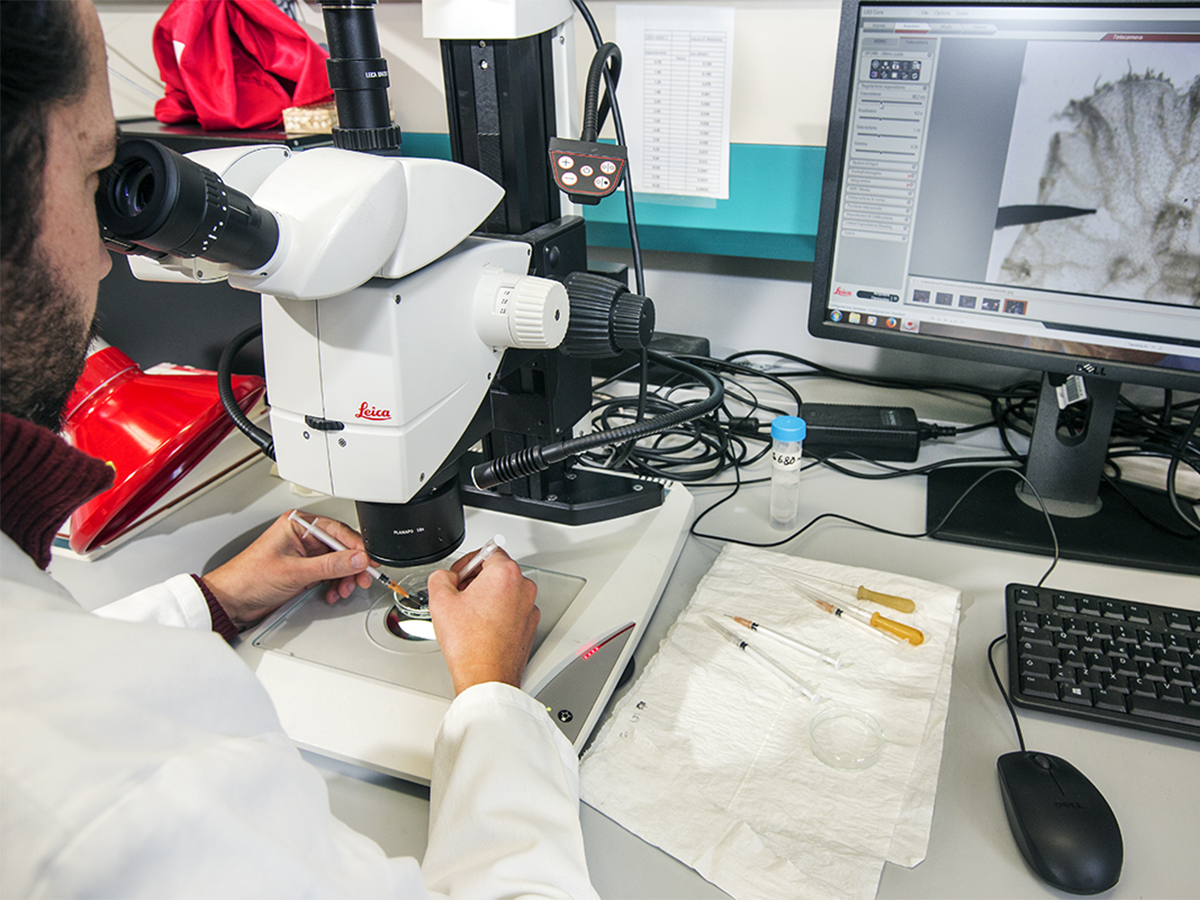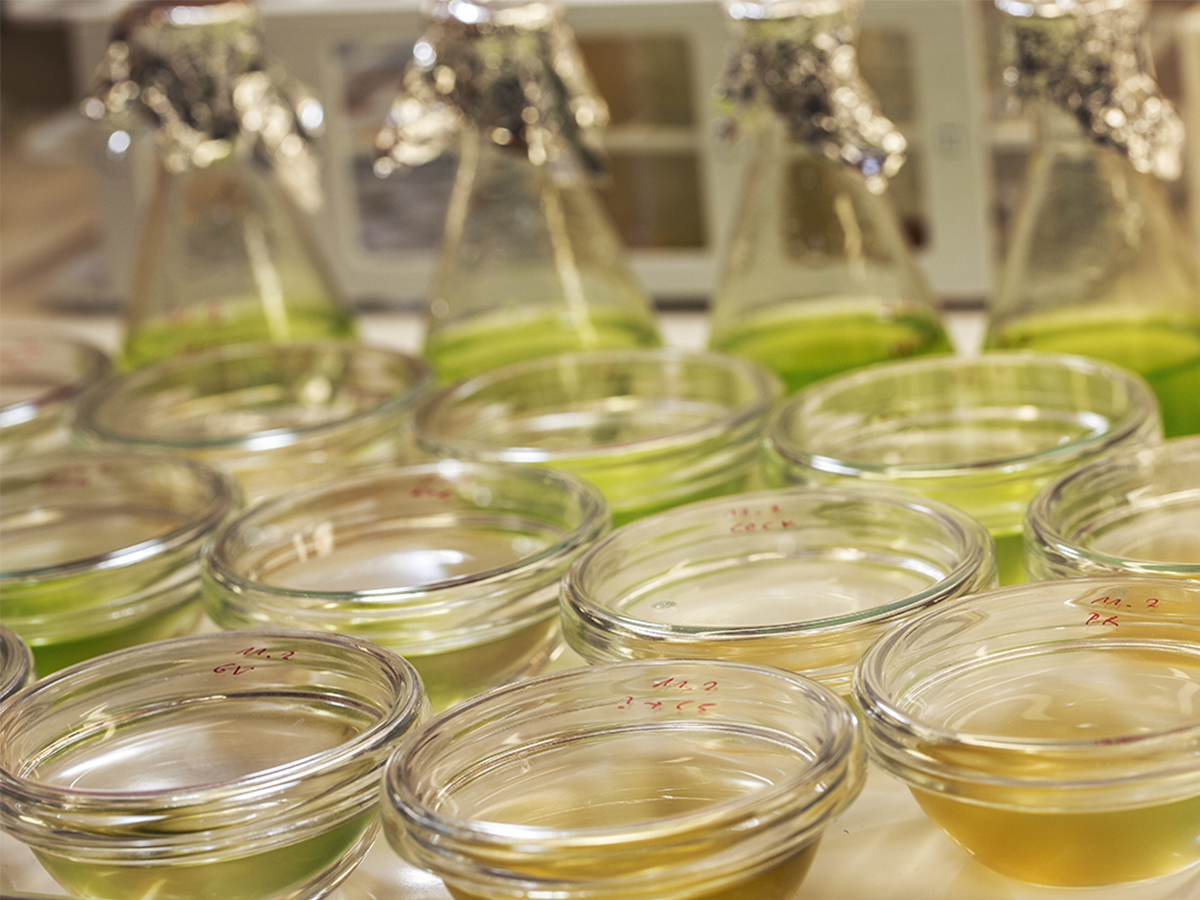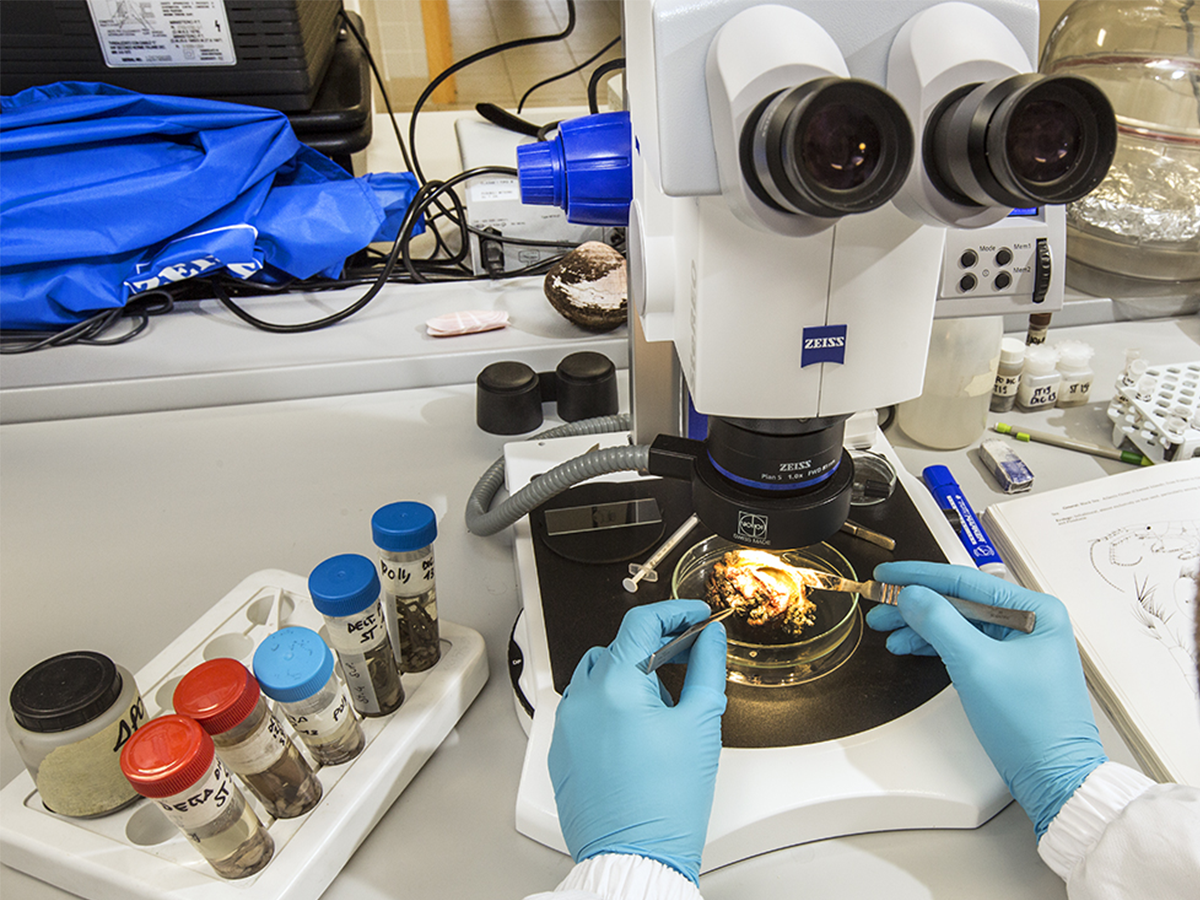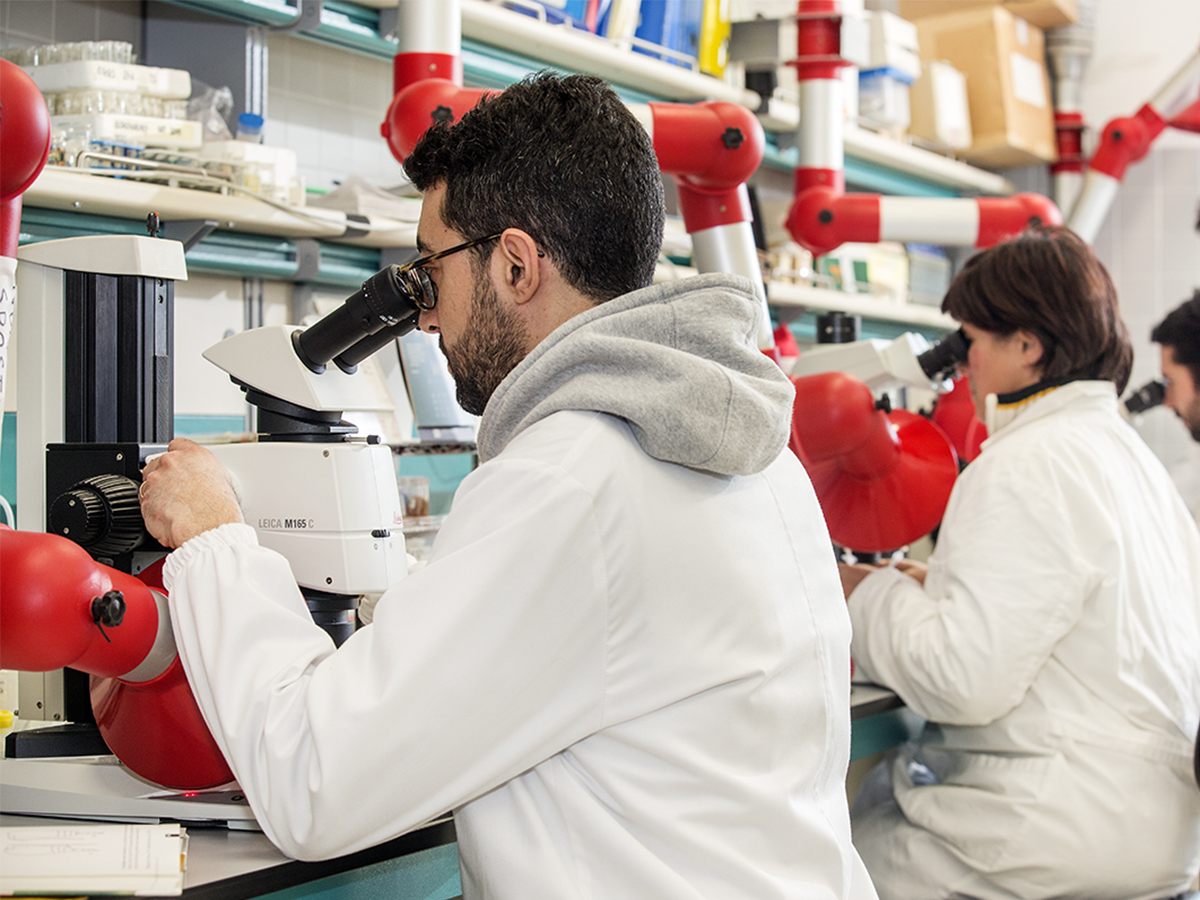Marine Chemistry and Biology Laboratories are equipped with instrumentation dedicated to the chemical characterisation of water, sediment and particulate matter and the determination of stable isotope ratios of elements such as carbon and nitrogen. They include equipment for the study of planktonic, demersal and benthic communities, their diversity and their role in ecosystem functioning.
The laboratories support research on climate change, ocean acidification, biogenic element cycles and anthropogenic impacts on the marine environment and they are structured to carry out research on biodiversity from both a morphological, through direct observation under the microscope, and molecular viewpoints.
Chemical laboratories
On the basis of the different analyses carried out, the chemical laboratories are divided into: chemical oceanography laboratory, sediment biogeochemistry laboratory and elemental and stable isotope analysis laboratory. The activities in the different laboratories are done in a coordinated and unified manner in order to ensure data sharing and interoperability.
The staff is trained to design and carry out field activities such as oceanographic campaigns for the acquisition of chemical and physical data, collection of samples for the study of processes at the water-sediment interface, analysis of the collected samples, processing and control of data quality and comparability (also participating in international intercalibration exercises), interpretation and presentation of results. The laboratories also provide high-level training to undergraduates and PhD students in scientific disciplines.
Chemical oceanography laboratory
It's equipped with instruments suitable for the characterisation of marine waters by measuring dissolved oxygen, chlorophyll a, inorganic nutrients (nitrites, nitrates, ammonium, orthophosphates, silicates), carbonate system, total dissolved nitrogen and phosphorus, chromic organic carbon, urea, hydrogen sulphide.
Main instrumentation: Automatic potentiometric titrators (Mettler Toledo G20 and T50) for the determination of dissolved oxygen using the Winkler method, and with thermostatic cell for the determination of total alkalinity, continuous flow automatic analyser with autosampler (QuAAtro Seal Analytical) for the determination of inorganic nutrients, spectrofluorometer (JASCO FP6500), spectrophotometer (Varian Cary 100), HPLC (Agilent 1100) with UV-VIS - DAD and fluorescence detectors (Perkin Elmer LS30), bench-top pH meters (ORION mod. Star A 211, WTW Inolab level 2).
Sediment biogeochemistry laboratory
is equipped with instrumentation suitable for the characterisation of sediments by measuring pH and redox potential, particle size analysis, determination of water content, organic matter (LOI), specific gravity, total phosphorus, total suspended solids, total and organic carbon and nitrogen, biopolymer components (lipids, carbohydrates, proteins).
The laboratory also undertakes the analysis and interpretation of the chemical composition of interstitial waters, with particular attention to the elements involved in the early diagenesis of organic matter (these investigations are performed by manipulating sediment cores in an inert environment), and the estimation of diffusive fluxes at the water-sediment interface through the application of Fick's first law of diffusion (theoretical calculated fluxes). For a more detailed definition of the biogeochemical processes taking place at the water-sediment interface (bioirrigation, advection, metabolic processes, etc.), these analyses are coupled with field experiments using benthic chambers for the determination of in situ fluxes (benthic fluxes).
Main instrumentation and equipment: laser diffraction particle analyser (Beckman Coulter LS13320), planetary ball mills (Retsch PM200), vibrating sieve shaker (Endecotts Octagon 200s), spectrophotometer (Varian Cary 50), microwave digester (Anton Paar Multiwave 3000), system for extruding cores in an inert environment (N2 flow), benthic chamber, box corer.
Elemental and stable isotope analysis laboratory
is dedicated to the study of the carbon and nitrogen cycle in the marine environment through the analysis of organic and inorganic carbon in liquid and solid matrices, total and organic carbon and nitrogen in suspended particulate matter. The laboratory is also equipped for the determination of stable isotopes of C and N in sediments, suspended particles and plankton, useful for understanding the origin of organic matter, and for studying trophic levels in marine ecosystems.
Main equipment: CHN Costech EA 4010 analyser and ISOTOC Cube coupled with an Isotope Ratio Mass Spectrometer ISOPRIME 100, Ultramicroblance Mettler Toledo XP6, TOC/DIC analyser Shimadzu TOC-V CSH with autosampler.
Each laboratory is equipped with fume hoods; the laboratories have a reagent room with cabinets for salts, acids, bases and flammables. The laboratories are also equipped with the following equipment and instruments for common use, shared with the biological laboratories:
CTD SBE 19plus with sensors for temperature, conductivity, pH, fluorescence and dissolved oxygen, rosettes with 12 5 L Niskin bottles, analytical microbalance, freeze-dryer, centrifuge, muffle, flow cryostats, ultrapure water production systems, 5 L horizontal water samplers, filtration ramps, vacuum pumps, recirculating water pumps, peristaltic pumps and ultrasonic sonicators.
Marine Biology Laboratories
The marine biology laboratories consist mainly of plankton and benthos laboratories, together with radionuclide and molecular biology laboratories.
Plankton laboratory
The plankton laboratory is designed for the study of phytoplankton, microzooplankton and zooplankton communities. One area is dedicated to the identification and enumeration of organisms. For the analysis of the phyto- and microzooplankton component, the laboratory is equipped with four inverted phase-contrast optical microscopes, one of which is equipped with a video camera, which are indispensable tools for the application of the sedimentation method. To distinguish the autotrophic and heterotrophic components, the laboratory has three epifluorescence microscopes, one of which is inverted phase contrast and two are upright. The identification of the specific diversity of phytoplankton and microzooplankton completes the knowledge of biogeochemical processes and contributes to the interpretation of the functioning of marine ecosystems.
In the zooplankton laboratory, analyses are conducted to identify taxonomic organisms and measure their main morphological characteristics. In addition, the abundance of organisms in various samples (water and stomach contents) and their biomass are evaluated. The laboratory is equipped with four stereomicroscopes (equipped with aspirators), one of which has an integrated camera and image analysis system. The equipment also includes two scales, one of which is analytical.
Another area is dedicated to studying the response of planktonic organisms in different environmental conditions. The laboratory has instruments for the cultivation of organisms placed in two refrigerated chambers: one chamber is equipped with 16 20 L aquariums with adjustable lighting and ventilation in which planktonic communities can be incubated; the other houses two photobioreactors with which experiments can be carried out under controlled conditions of pH, temperature, light and CO2.
Benthos Laboratory
The laboratory is dedicated to the study of benthic organisms; it is equipped with 3 stereomicroscopes (with aspirators) for the taxonomic identification of invertebrates through the observation of their main morphological characteristics. One of these instruments has an integrated video-photographic acquisition system that also enables the detailed measurement of some anatomical components of the organisms under examination. The identification of the specific diversity of animals living in close relationship with the sediment contributes to the interpretation of the functioning of marine ecosystems, in particular the benthic compartment.
Microbiology laboratory
The microbiology laboratory is equipped to perform abundance, diversity and activity analyses of marine microorganisms. It is equipped with epifluorescence microscopes and a flow cytometer for the observation and enumeration of viruses, prokaryotes and small eukaryotes (< 30 μm). Estimates of metabolic rates are made using fluorochromes and a single-cell spectrofluorometer and a multi-mode microplate reader for fluorescence, luminescence and absorbance measurements. Areas dedicated to bacteriology allow investigations to be carried out for the research, isolation and characterisation of culturable bacteria. Experimental activities are performed thanks to the availability of incubators, thermostatted cells and small and medium-sized aquariums kept under controlled conditions.
The radionuclide laboratory, equipped with a beta-counter, is used for the determination of utilisation rates of model molecules by planktonic and benthic microorganisms.
The molecular biology laboratory, equipped with classic thermal cyclers, RT-PCR and electrophoresis systems, is of similar cross-sectional use, allowing in-depth investigations into the biological diversity of marine organisms and the presence/quantification of target genes.

